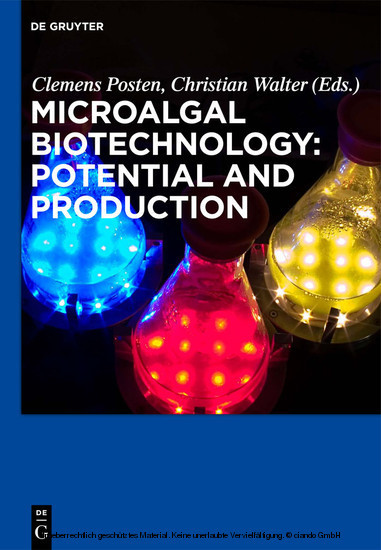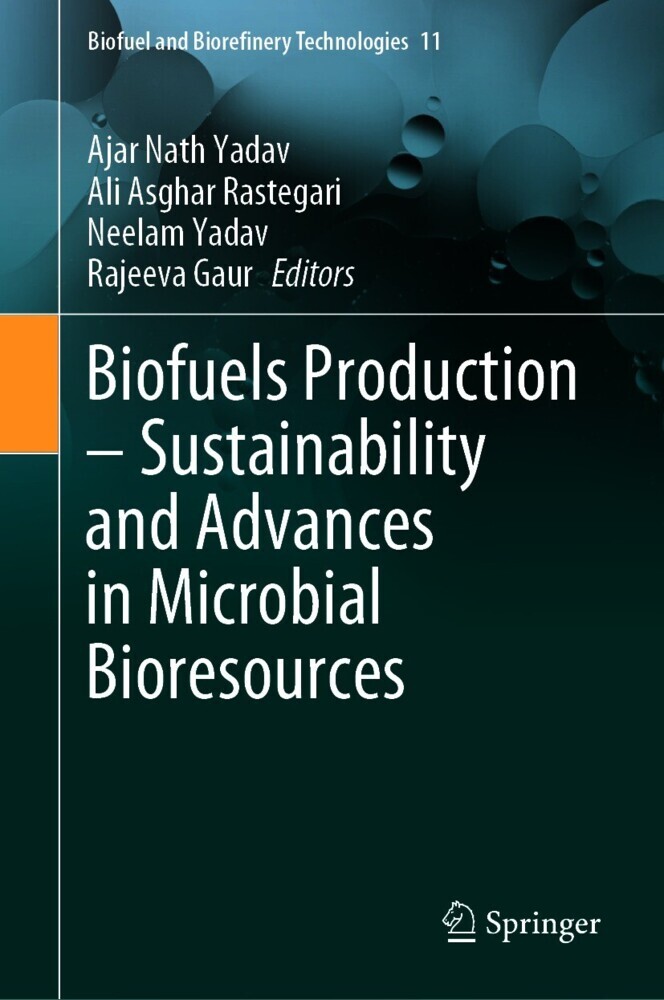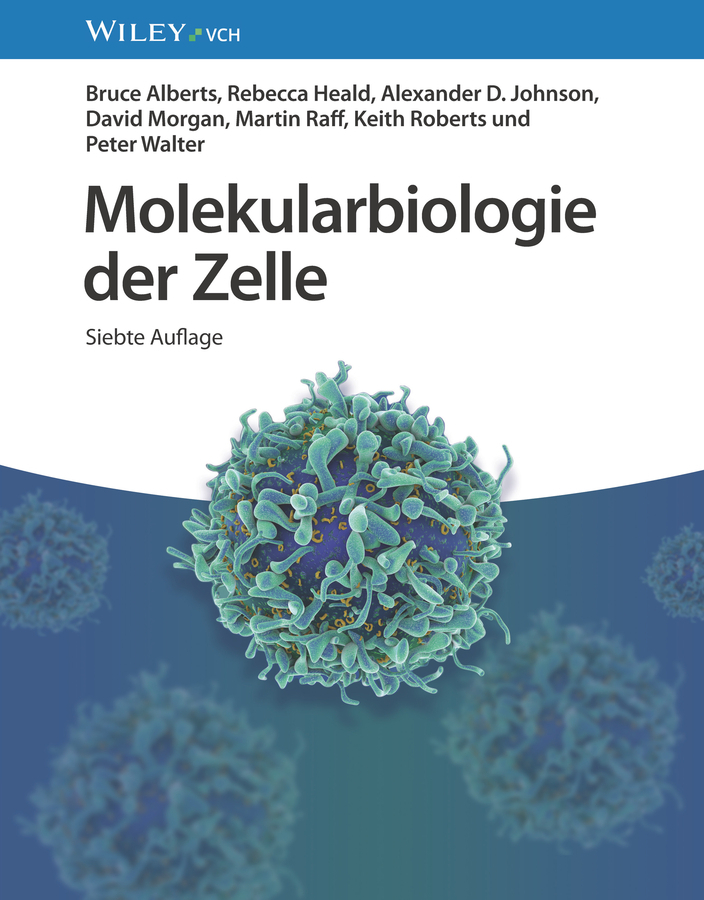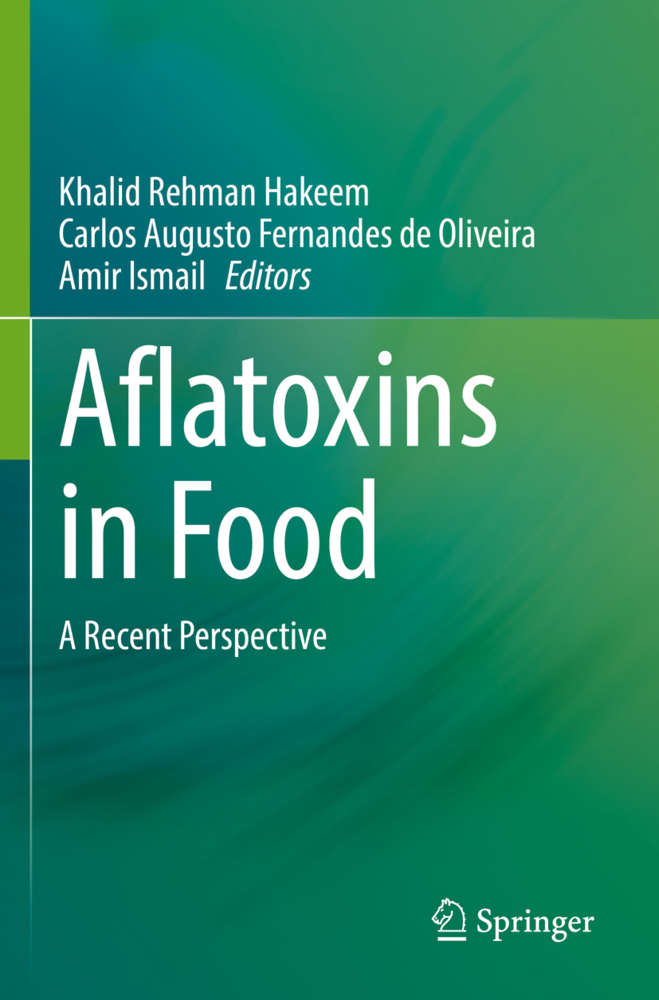Microalgal Biotechnology: Potential and Production
This book treats the biological fundamentals of microalgal biotechnology and provides an overview of applications and products. It includes a survey of the state-of-the-art in process engineering of algae cultivation mass production, advanced technologies in closed photobioreactors, genetic manipulation and bioprocess engineering. Contributions from academia and industrial case studies make this book a comprehensive survey of current progress in microalgae biotechnology. This book will be of interest to active people in biology, biotechnology, and engineering.
1;Preface;5 2;1 Introduction - Discovering Microalgae as Source for Sustainable Biomass;21 2.1;1.1 All life eminates from the sun! All life originates from the sea!;21 2.2;1.2 Sustainable microalgal biomass of the third generation;23 2.2.1;1.2.1 Microalgae produce 5 times more biomass per hectare than terrestrial crops;23 2.2.2;1.2.2 Microalgae can be cultivated in arid areas which are not suitable for agriculture;24 2.2.3;1.2.3 Microalgae exhibit high lipid contents over 50% and high titers of other products;24 2.3;1.3 The technical challenge;24 2.3.1;1.3.1 Microalgae can use CO2 and sunlight;24 2.3.2;1.3.2 Microalgae can deliver cheap sustainable biomass for bulk chemicals and biofuels;25 2.3.3;1.3.3 Microalgae can be produced nearly everywhere;25 2.3.4;1.3.4 Microalgae do not need pesticides and only little fertilizers;26 2.3.5;1.3.5 Closed photobioreactors as tools of choice;27 3;The biological potential of microalgae;29 3.1;2 Phylogeny and systematics of microalgae: An overview;31 3.1.1;2.1 Introduction;31 3.1.2;2.2 Diversity and evolution of microalgae;36 3.1.2.1;2.2.1 Algal diversity;36 3.1.2.2;2.2.2 Algal evolution;37 3.1.3;2.3 Cyanobacteria: The prokaryotic algae;39 3.1.4;2.4 Plantae or Archaeplastida supergroup: Green algae, red algae and glaucophytes;42 3.1.4.1;2.4.1 Viridiplantae: The green algae distributed over two phyla;42 3.1.4.2;2.4.2 Rhodophyta: Red algae;45 3.1.4.3;2.4.3 Glaucophytes;46 3.1.5;2.5 Chromalveolate algae: The photosynthetic Stramenopiles (heterokont algae);46 3.1.5.1;2.5.1 Diatoms (Bacillariophyta; photosynthetic Stramenopiles);47 3.1.5.2;2.5.2 Eustigmatophyceae and Xanthophyceae (photosynthetic Stramenopiles);49 3.1.5.3;2.5.3 Other photosynthetic Stramenopiles;50 3.1.5.3.1;2.5.3.1 Raphidophyceae;50 3.1.5.3.2;2.5.3.2 Synurophyceae and Chrysophyceae;50 3.1.5.3.3;2.5.3.3 Phaeophyceae;51 3.1.6;2.6 Chromalveolate algae: coccolithophorids and haptophyte algae;51 3.1.7;2.7 Chromalveolate algae: Dinoflagellates (Dinophyta);52 3.1.8;2.8 Euglenoids (Excavata supergroup);53 3.1.9;Acknowledgements;53 3.1.10;References;54 3.2;3 Balancing the conversion efficiency from photon to biomass;59 3.2.1;3.1 Introduction;59 3.2.2;3.2 Definition of important terms;60 3.2.2.1;3.2.1 Photosynthetic efficiency;60 3.2.2.2;3.2.2 Growth efficiency (photon to biomass efficiency);61 3.2.3;3.3 Physiological dynamics of processes which control biological energy conversion efficiency;65 3.2.3.1;3.3.1 Absorption;65 3.2.3.2;3.3.2 Regulation and efficiency of photochemistry;66 3.2.3.3;3.3.3 Regulation of electron flow;67 3.2.3.4;3.3.4 Regulation of carbon allocation;68 3.2.4;3.4 Conclusions for microalgal biotechnology;70 3.3;References;71 3.4;4 Algae symbiosis with eukaryotic partners;75 3.4.1;4.1 Introduction to algae-specific symbiosis;75 3.4.1.1;4.1.1 Importance of algae symbiotic relationships;75 3.4.1.2;4.1.2 Modes of algae symbiosis with eukaryotes;76 3.4.2;4.2 Aquatic systems;78 3.4.2.1;4.2.1 Algae symbiosis with Cnidaria;78 3.4.2.1.1;4.2.1.1 Symbiont uptake and management;80 3.4.2.1.2;4.2.1.2 Flux of primary metabolites in host and symbiont;80 3.4.2.1.3;4.2.1.3 Optimizing photosynthesis for efficient metabolite exchange;81 3.4.2.1.4;4.2.1.4 Symbiont-derived secondary metabolites;81 3.4.2.1.5;4.2.1.5 Effects of environmental stress on symbiosis;82 3.4.2.2;4.2.2 Algae symbiosis with Porifera;82 3.4.2.2.1;4.2.2.1 Morphology of sponge-algae associations;83 3.4.2.2.2;4.2.2.2 Symbiont uptake, specificity and transmission;84 3.4.2.2.3;4.2.2.3 Flux of primary metabolites in host and symbiont;84 3.4.2.2.4;4.2.2.4 Symbiont-derived secondary metabolites;85 3.4.2.2.5;4.2.2.5 Effects of environmental stress on symbiosis;85 3.4.2.3;4.2.3 Algae symbiosis with Mollusca;86 3.4.2.3.1;4.2.3.1 Morphology of mollusc-algae associations;86 3.4.2.3.2;4.2.3.2 Symbiont uptake and maintenance;87 3.4.2.3.3;4.2.3.3 Flux of primary metabolites in host and symbiont;88 3.4.3;4.3 Terrestrial system;88 3.4.3.1;4.3.1 Lichens: Ecological pioneers;88 3.4.3.2;4
Posten, Clemens
Walter, Christian
| ISBN | 9783110225020 |
|---|---|
| Artikelnummer | 9783110225020 |
| Medientyp | E-Book - PDF |
| Copyrightjahr | 2013 |
| Verlag | Walter de Gruyter GmbH & Co.KG |
| Umfang | 285 Seiten |
| Sprache | Englisch |
| Kopierschutz | Digitales Wasserzeichen |




